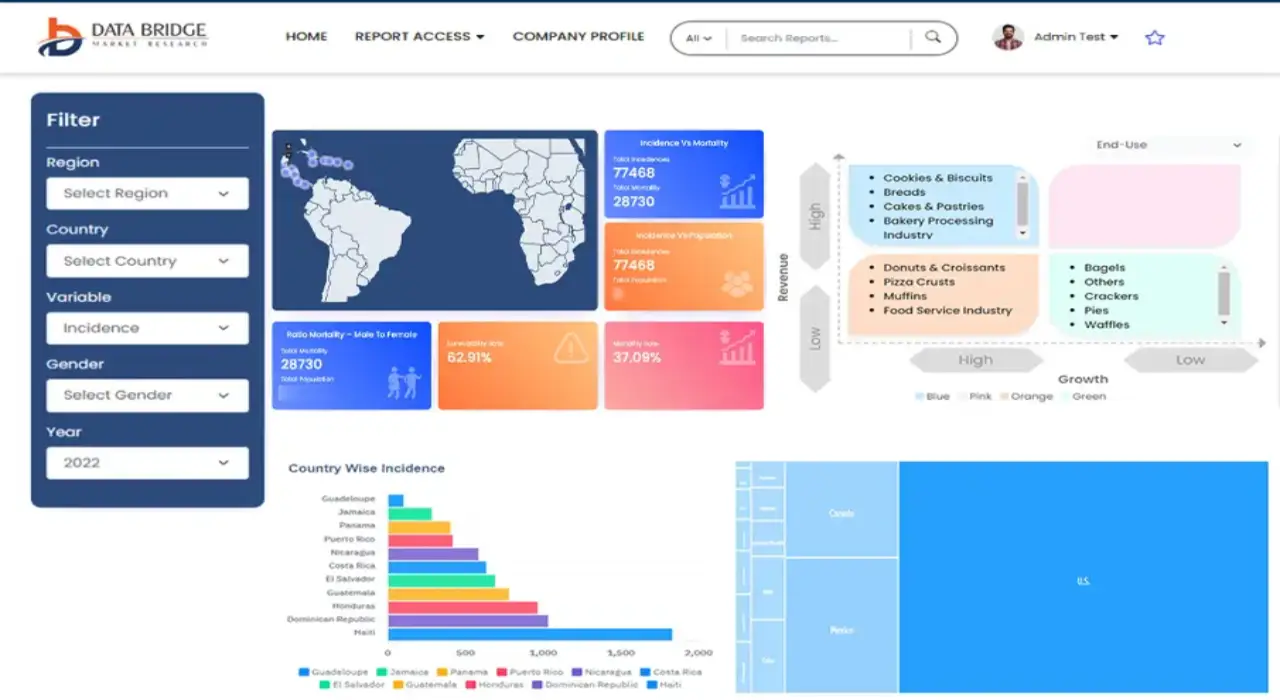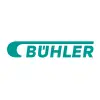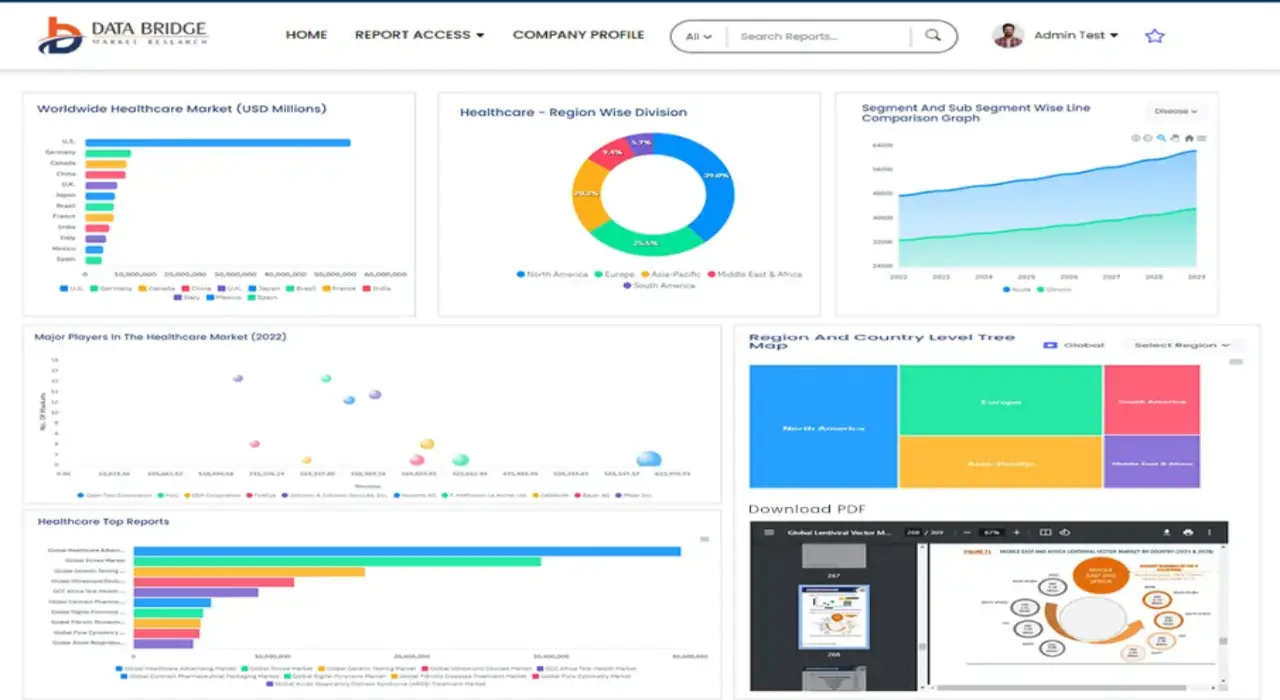Latin America Air Conditioner Market
Market Size in USD Billion
CAGR :
% 
 USD
19.00 Billion
USD
30.51 Billion
2024
2032
USD
19.00 Billion
USD
30.51 Billion
2024
2032
| 2025 –2032 | |
| USD 19.00 Billion | |
| USD 30.51 Billion | |
|
|
|
|
Latin America Air Conditioner Market Segmentation, By Type (Portable AC, Window AC, Packaged AC, Airside AC, Split AC, Floor Mounted Units, Cassettes, Inverter AC, Centralized and Others), Duct Type (Ductless and Ducted), Capacity (Up to 1 ton, 1.1 TO 1.5 ton, 1.6 TO 2 ton and Above 2 ton), Technology (Manual and Automatic), Component (Compressor, Evaporator, Drier/Receiver, Condenser, Air Handling Unit, Duct System and Others), Distribution Channel (Online, Specialty Stores, Retail Outlets, Distributors/Dealers, Real Estate Developers, Housing Decoration Enterprises and Others), End-User (Residential, Commercial, Industrial and Government & Transportation) - Industry Trends and Forecast to 2032
Latin America Air Conditioner Market Size
- The Latin America air conditioner market size was valued at USD 19.00 billion in 2024 and is expected to reach USD 30.51 billion by 2032, at a CAGR of 6.10% during the forecast period
- The market growth is largely fuelled by the rising demand for residential and commercial cooling solutions amid increasing urbanization and changing climatic conditions
- Expanding construction activities, particularly in commercial real estate and hospitality, are further driving the adoption of advanced and energy-efficient air conditioning systems
Latin America Air Conditioner Market Analysis
- The region is witnessing a significant shift toward energy-efficient and eco-friendly air conditioners, supported by government regulations promoting sustainable cooling technologies
- Technological advancements, including smart features such as remote access, voice control, and IoT integration, are enhancing adoption across both residential and commercial spaces
- Brazil captured the largest revenue share in the Latin America air conditioner market in 2024. The country’s large population and high urban density are driving widespread adoption of residential and commercial AC units
- Argentina is expected to witness the highest compound annual growth rate (CAGR) in the Latin America air conditioner market due to increasing disposable incomes, urbanization, and rising awareness of cooling solutions in residential and commercial sectors
- The split AC segment held the largest market revenue share in 2024, driven by its high efficiency, compact design, and suitability for both residential and commercial applications. Split ACs are widely preferred due to their quiet operation, energy-saving features, and affordability compared to centralized systems.
Report Scope and Latin America Air Conditioner Market Segmentation
|
Attributes |
Latin America Air Conditioner Key Market Insights |
|
Segments Covered |
|
|
Countries Covered |
Latin America
|
|
Key Market Players |
|
|
Market Opportunities |
|
|
Value Added Data Infosets |
In addition to the insights on market scenarios such as market value, growth rate, segmentation, geographical coverage, and major players, the market reports curated by the Data Bridge Market Research also include in-depth expert analysis, pricing analysis, brand share analysis, consumer survey, demography analysis, supply chain analysis, value chain analysis, raw material/consumables overview, vendor selection criteria, PESTLE Analysis, Porter Analysis, and regulatory framework. |
Latin America Air Conditioner Market Trends
“Shift Toward Energy-Efficient and Smart Air Conditioning Solutions”
- The rising adoption of energy-efficient air conditioners is transforming the Latin American market, driven by increasing electricity costs and heightened environmental awareness. Consumers are prioritizing appliances with higher energy ratings and eco-friendly refrigerants to reduce operational costs and carbon footprints
- The growing popularity of smart and connected AC units is accelerating the demand for remote-controlled systems. Features such as smartphone connectivity, voice assistance, and real-time monitoring are becoming increasingly attractive to urban households and commercial spaces across the region
- The affordability and wider availability of inverter technology are making it a preferred choice among middle-class households. Inverter ACs ensure optimized cooling with reduced power consumption, providing long-term cost savings and meeting rising sustainability expectations
- For instance, in 2023, several AC manufacturers in Brazil launched energy-efficient inverter-based models tailored for tropical climates, which helped reduce household power consumption while maintaining reliable cooling during peak summer demand
- While energy-efficient and smart systems are reshaping the market, their success depends on sustained innovation, effective consumer education, and pricing strategies that cater to both premium and budget-conscious buyers. Manufacturers must localize offerings to maximize adoption across diverse income groups
Latin America Air Conditioner Market Dynamics
Driver
“Rising Urbanization and Expanding Middle-Class Population”
- Rapid urbanization across Latin America is fueling the demand for air conditioners, particularly in metropolitan cities where rising temperatures and dense housing require efficient cooling solutions. As populations shift toward city living, demand for reliable cooling systems in apartments, offices, and retail spaces continues to rise. This urban shift is creating a significant consumer base for both residential and commercial installations
- A growing middle-class population with higher disposable incomes is increasingly investing in comfort-oriented appliances such as ACs. Rising household incomes enable greater spending on modern amenities, with ACs now seen as a necessity rather than a luxury. This demographic change is driving consistent market expansion, especially in Brazil, Mexico, and Argentina
- Governments and private organizations are introducing energy standards and incentive programs to promote the use of efficient cooling systems. These initiatives not only encourage consumer adoption but also support environmental targets by reducing energy consumption. As a result, manufacturers are increasingly focusing on designing products that comply with such policies
- For instance, in 2022, Mexico introduced stricter minimum energy performance standards (MEPS) for air conditioners, which increased demand for energy-rated products across the residential segment. This policy shift not only supported sustainability goals but also encouraged global players to strengthen their presence in the region through product innovation
- While urbanization and income growth are key drivers, ensuring affordability, reliable power supply, and wide product availability remain crucial for the market’s long-term expansion. Stakeholders must balance consumer demand with cost-efficient solutions and infrastructure improvements to ensure sustainable adoption
Restraint/Challenge
“High Energy Costs and Infrastructure Limitations”
- The high electricity costs associated with continuous air conditioner usage limit affordability for low-income households. This remains a major challenge across the region, where economic disparities are significant. Many households avoid AC ownership due to high operational expenses, restricting penetration in emerging markets
- Limited infrastructure in certain regions, including unstable power supply and outdated distribution networks, further reduces the penetration of air conditioning systems. Frequent outages and inconsistent voltage affect product performance, discouraging consumers from investing in advanced cooling technologies. These issues create inefficiencies and discourage long-term usage
- Import dependency on components and raw materials also impacts supply chain stability, often leading to price fluctuations and delayed product availability. Manufacturers face difficulties in ensuring consistent production and delivery timelines, which hinders overall market competitiveness. This poses challenges for both multinational and local players operating in competitive markets
- For instance, in 2023, several distributors in Argentina reported delays and increased costs in AC units due to import restrictions and currency volatility, which constrained consumer adoption. This highlighted the vulnerability of the market to policy shifts and economic instability, further limiting scalability
- While new technologies and localized manufacturing are improving affordability, addressing infrastructure gaps, high energy tariffs, and supply chain bottlenecks is critical to unlocking the full market potential of air conditioners in Latin America. Sustainable solutions, policy reforms, and regional collaborations are essential for long-term resilience
Latin America Air Conditioner Market Scope
The market is segmented on the basis of type, duct type, capacity, technology, component, distribution channel, and end-user.
• By Type
On the basis of type, the Latin America air conditioner market is segmented into portable AC, window AC, packaged AC, airside AC, split AC, floor mounted units, cassettes, inverter AC, centralized, and others. The split AC segment held the largest market revenue share in 2024, driven by its high efficiency, compact design, and suitability for both residential and commercial applications. Split ACs are widely preferred due to their quiet operation, energy-saving features, and affordability compared to centralized systems.
The inverter AC segment is expected to witness the fastest growth rate from 2025 to 2032, supported by rising demand for energy-efficient and eco-friendly cooling solutions across urban households. Inverter ACs adjust compressor speed according to cooling requirements, resulting in significant energy savings and enhanced performance. Increasing government energy regulations and consumer preference for cost-effective long-term solutions are accelerating their adoption.
• By Duct Type
On the basis of duct type, the Latin America air conditioner market is segmented into ductless and ducted systems. The ductless segment held the largest market share in 2024, owing to its affordability, ease of installation, and suitability for residential apartments and small commercial spaces. These systems are highly efficient for localized cooling and require minimal structural modifications.
The ducted segment is expected to witness the fastest growth rate from 2025 to 2032, particularly across large commercial buildings, malls, and industrial facilities. Ducted air conditioning offers centralized cooling and improved airflow distribution, which is becoming increasingly important in modern infrastructure projects. Rising investments in commercial real estate are expected to drive this segment forward.
• By Capacity
On the basis of capacity, the market is segmented into up to 1 ton, 1.1 to 1.5 ton, 1.6 to 2 ton, and above 2 ton. The 1.1 to 1.5 ton segment accounted for the largest revenue share in 2024, as this range is widely suitable for average-sized residential rooms and small offices. Its balance of affordability, performance, and energy efficiency makes it the most popular choice among middle-class households.
The above 2 ton segment is expected to witness the fastest growth rate from 2025 to 2032, driven by demand from large commercial spaces, industrial setups, and institutional facilities. As urbanization progresses, large-scale air conditioning requirements in malls, offices, and public infrastructure will continue to expand, fueling growth in this category.
• By Technology
On the basis of technology, the market is segmented into manual and automatic systems. The manual segment held the largest market share in 2024, as basic air conditioning units remain highly affordable and accessible for price-sensitive consumers across Latin America. Their simplicity and lower upfront cost keep them relevant in emerging economies.
The automatic segment is expected to witness the fastest growth rate from 2025 to 2032, supported by rising consumer demand for smart and energy-efficient appliances. Features such as remote operation, programmable timers, and IoT integration make automatic ACs increasingly attractive to middle- and high-income consumers seeking convenience and sustainability.
• By Component
On the basis of component, the market is segmented into compressor, evaporator, drier/receiver, condenser, air handling unit, duct system, and others. The compressor segment dominated the market in 2024, as it is the core component responsible for regulating cooling performance. High demand for efficient, durable compressors is driving continuous innovation and adoption.
The air handling unit segment is expected to witness the fastest growth rate from 2025 to 2032, largely due to the rising adoption of centralized and ducted systems in large-scale commercial projects. Modern infrastructure development and the increasing focus on indoor air quality are boosting demand for advanced handling units.
• By Distribution Channel
On the basis of distribution channel, the market is segmented into online, specialty stores, retail outlets, distributors/dealers, real estate developers, housing decoration enterprises, and others. The retail outlets segment held the largest share in 2024, with consumers preferring to purchase AC units through physical stores where installation services and product demonstrations are readily available.
The online segment is expected to witness the fastest growth rate from 2025 to 2032, driven by the growing popularity of e-commerce platforms and increasing consumer confidence in online purchasing. Competitive pricing, convenient delivery, and bundled installation services offered by online retailers are further fueling this trend.
• By End-User
On the basis of end-user, the Latin America air conditioner market is segmented into residential, commercial, industrial, and government & transportation. The residential segment accounted for the largest revenue share in 2024, as urban households increasingly adopt air conditioners to cope with rising temperatures and improve living comfort.
The commercial segment is expected to witness the fastest growth rate from 2025 to 2032, fueled by rapid expansion of office spaces, shopping malls, hotels, and restaurants. Energy-efficient and large-capacity systems are being widely deployed to meet the cooling needs of high-traffic establishments across metropolitan areas.
Latin America Air Conditioner Market Regional Analysis
- Brazil captured the largest revenue share in the Latin America air conditioner market in 2024. The country’s large population and high urban density are driving widespread adoption of residential and commercial AC units
- Rapid urbanization, growing middle-class population, and increasing temperatures across major cities are driving AC adoption. Expansion of metropolitan areas such as São Paulo and Rio de Janeiro has created concentrated consumer bases, boosting demand for both split and packaged AC systems
- Strong demand for split and inverter AC units, coupled with government energy efficiency initiatives, is further strengthening market dominance. Incentives and regulations promoting low-energy appliances are encouraging manufacturers to introduce advanced AC technologies
Argentina Air Conditioner Market Insight
The Argentina air conditioner market is expected to witness the fastest growth rate from 2025 to 2032, supported by rising urbanization and increasing awareness of climate comfort among households. The expanding middle class is driving demand for cost-effective and energy-efficient cooling solutions. Despite challenges such as import restrictions, currency volatility, and infrastructure limitations, local distributors are improving product accessibility. Growing residential demand, especially in metropolitan areas, along with rising adoption of inverter and ductless ACs, is fueling market expansion. The commercial segment is also witnessing increased investment in energy-efficient air conditioning systems. Government initiatives to promote modern AC technologies further support long-term growth in Argentina.
Latin America Air Conditioner Market Share
The Latin America air conditioner industry is primarily led by well-established companies, including:
- Whirlpool Corporation (U.S.)
- Johnson Controls (U.S.)
- Samsung (South Korea)
- LG Electronics (South Korea)
- Panasonic Corporation (Japan)
- Godrej & Boyce Mfg. Co. Ltd. (India)
- AB Electrolux (Sweden)
- Hitachi, Ltd. (Japan)
- Haier Inc. (China)
- Midea Group (China)
- Mitsubishi Electric Corporation (Japan)
- Robert Bosch GmbH (Germany)
- Lennox International (U.S.)
- DAIKIN INDUSTRIES, Ltd. (Japan)
- MODINE MANUFACTURING COMPANY (U.S.)
- DAEWOO ELECTRONICS CO. LTD. (South Korea)
- United Technologies (U.S.)
- Ventisol (Brazil)
- GREE ELECTRIC APPLIANCES, INC. (China)
- Hisense (China)
SKU-
Get online access to the report on the World's First Market Intelligence Cloud
- Interactive Data Analysis Dashboard
- Company Analysis Dashboard for high growth potential opportunities
- Research Analyst Access for customization & queries
- Competitor Analysis with Interactive dashboard
- Latest News, Updates & Trend analysis
- Harness the Power of Benchmark Analysis for Comprehensive Competitor Tracking
Research Methodology
Data collection and base year analysis are done using data collection modules with large sample sizes. The stage includes obtaining market information or related data through various sources and strategies. It includes examining and planning all the data acquired from the past in advance. It likewise envelops the examination of information inconsistencies seen across different information sources. The market data is analysed and estimated using market statistical and coherent models. Also, market share analysis and key trend analysis are the major success factors in the market report. To know more, please request an analyst call or drop down your inquiry.
The key research methodology used by DBMR research team is data triangulation which involves data mining, analysis of the impact of data variables on the market and primary (industry expert) validation. Data models include Vendor Positioning Grid, Market Time Line Analysis, Market Overview and Guide, Company Positioning Grid, Patent Analysis, Pricing Analysis, Company Market Share Analysis, Standards of Measurement, Global versus Regional and Vendor Share Analysis. To know more about the research methodology, drop in an inquiry to speak to our industry experts.
Customization Available
Data Bridge Market Research is a leader in advanced formative research. We take pride in servicing our existing and new customers with data and analysis that match and suits their goal. The report can be customized to include price trend analysis of target brands understanding the market for additional countries (ask for the list of countries), clinical trial results data, literature review, refurbished market and product base analysis. Market analysis of target competitors can be analyzed from technology-based analysis to market portfolio strategies. We can add as many competitors that you require data about in the format and data style you are looking for. Our team of analysts can also provide you data in crude raw excel files pivot tables (Fact book) or can assist you in creating presentations from the data sets available in the report.












